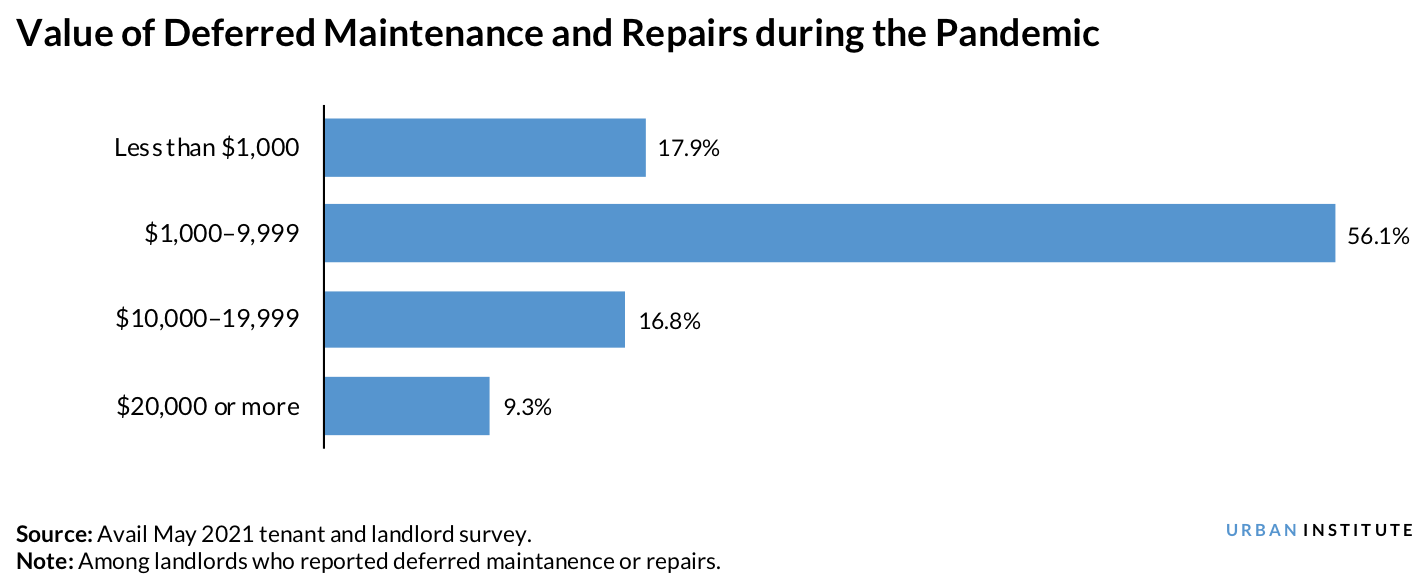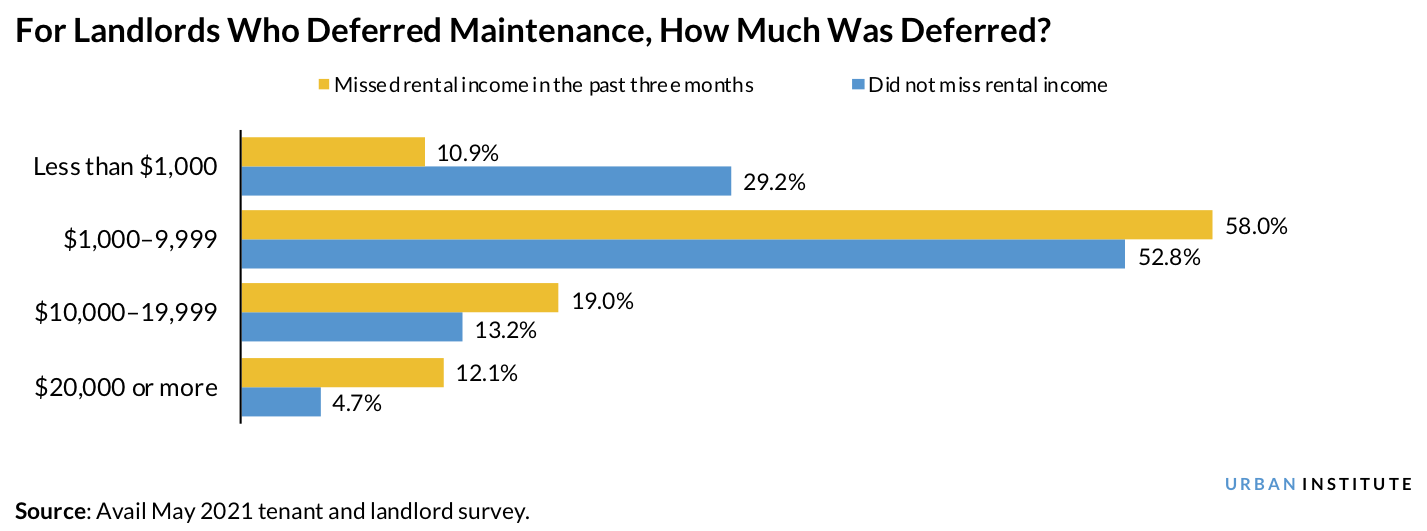
<p>(Underawesternsky/Shutterstock)</p>
The federal eviction moratorium has been extended once more until the end of July, giving tenants more time to get back on their feet and giving states more time to distribute emergency rental assistance. Though this is welcome news for struggling tenants, eviction moratoriums are not without negative consequences.
One unintended outcome is deferred maintenance. If the tenant is not paying rent, many landlords—especially independent “mom and pop” landlords—cannot afford to provide proper upkeep.
We partnered with Avail, an online platform serving do-it-yourself mom-and-pop landlords, to understand the challenges landlords and tenants face during the COVID-19 pandemic through a series of surveys. Our new analysis of data from the the May 2021 survey, which received responses from more than 1,000 landlords and 1,300 tenants nationwide, revealed deferred maintenance as a significant issue, particularly for landlords who are owed rent.
How much maintenance has been deferred?
In May, 28 percent of landlords reported deferring maintenance on at least one of their units during the pandemic, and 27 percent of tenants reported their maintenance requests were going unanswered.
Most of these requests were minor or cosmetic or involved appliance repair or replacement, but 27 percent involved more serious structural repairs and 28 percent involved plumbing issues. If not addressed, these problems tend to worsen and become more expensive to repair.
“Maintenance has become so difficult for our landlord that most of the time we are doing it and paying for it ourselves.”
– Renter, California
Almost three-quarters of landlords said the total cost of deferred maintenance needs was less than $10,000, with the greatest share falling between $1,000 and $9,999 (56 percent). About 9 percent of landlords said they deferred maintenance needs totaling $20,000 or more.

In many cases, landlords put off maintenance or repairs for a considerable period. Of landlords who deferred maintenance, 56 percent did so for at least six months. This includes the 17 percent who deferred maintenance for more than a year.
Deferred maintenance is related to missed rental payments
When asked why they deferred maintenance, 62 percent of landlords cited financial reasons. Finances were by far the largest contributing cause, followed by difficulty accessing the rental unit and difficulty hiring help or maintenance personnel (both 27 percent).
“The missed rent has become a hardship for the property maintenance. It needs windows and deck repair, but without full rent, we can't do it.”
– Landlord, Illinois
Those who missed rental income were much more likely to defer maintenance, especially maintenance with a high price tag. Forty-one percent of landlords who lost rental income deferred maintenance compared with 18 percent of those who did not lose rental income.
For landlords who lost rental income, the price tag of deferred maintenance is much larger. Among landlords who did not lose rental income, 29 percent said their deferred maintenance costs totaled less than $1,000, and only 5 percent had deferred maintenance costs higher than $20,000.
In contrast, among landlords who lost rental income, only 11 percent had deferred less than $1,000 in repairs and maintenance tasks, and 12 percent had deferred more than $20,000. Not surprisingly, a higher proportion of those who lost rental income were continuing to delay maintenance.

Emergency rental assistance could help landlords and tenants
The loss of rental income has caused many landlords to defer maintenance, but putting off maintenance is bad for everyone.
For tenants, disrepair deteriorates the safety and habitability of their homes, affecting their health and quality of life. For landlords, deferred maintenance could result in more expensive future repairs.
Many state housing finance authorities offer low-cost loans to aid landlords with repairs, though not all landlords are aware of these options. States that offer these programs could better promote their availability through direct outreach to landlords and public relations campaigns.
More importantly, the number of landlords who are postponing maintenance reinforces the need to allocate emergency rental assistance (ERA) as quickly as feasible. As we recently noted, states are struggling to distribute ERA, and renters, unsure of their eligibility and confused by the applications, are not applying for it. Recent US Department of the Treasury data on ERA compliance indicate that even though the pace of distribution is increasing, only $3.0 billion of the $25 billion of the emergency rental assistance authorized in December had been distributed by the end of June.
Our calculations from the same Treasury data (.xlsx) indicate that the rental assistance distributed from January to June averages $4,738 per household. This assistance, if quickly distributed, could be a lifeline for many tenants and landlords, providing vital funding for much-needed preservation of their homes and properties.
The Urban Institute has the evidence to show what it will take to create a society where everyone has a fair shot at achieving their vision of success.
Let’s build a future where everyone, everywhere has the opportunity and power to thrive
Urban is more determined than ever to partner with changemakers to unlock opportunities that give people across the country a fair shot at reaching their fullest potential. Invest in Urban to power this type of work.